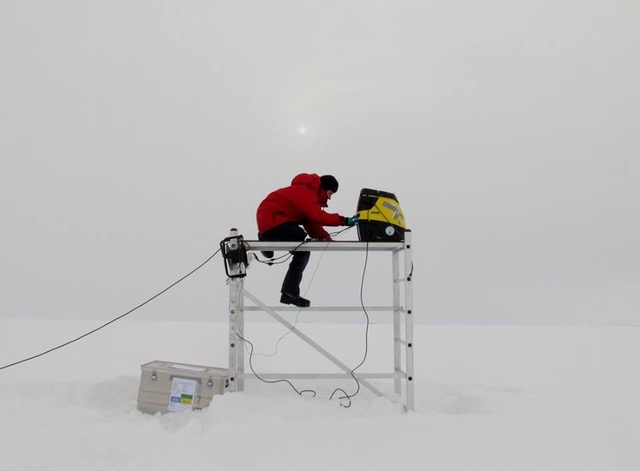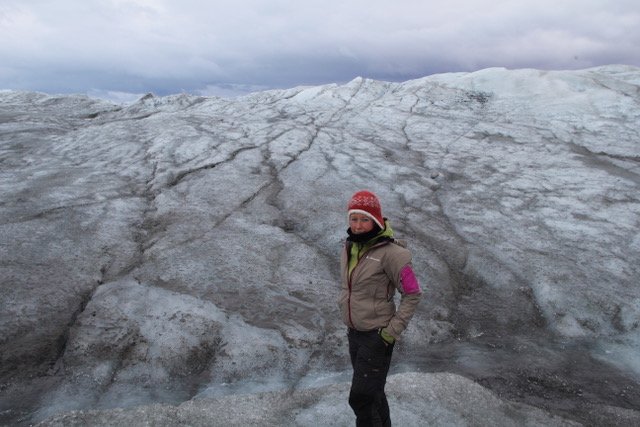PI-ICE - sampling bioaerosols in the Antarctic
When the sea is foaming there is more than water and salt involved

A windy day at the beach with sea foam on the waves your windshield and everything else will be covered by a layer of salt. Unknown by most is that together with this salt myriads of minute biological particles are emitted into the air and further up in the higher atmosphere, influencing the formation of clouds. These particles are called bioaerosols, and all over the World researchers are studying to what extent this biological material influences weather and climate.
Over the next weeks assistant professor Tina Šantl-Temkiv is based in Antarctis, studying bioaerosols in the Southern Polar Seas around the Spanish research base Juan Carlos I.
Tina Šantl-Temkiv is one of the leading young researchers of aeromicrobiology. She is assistant professor at the section for microbiology at the Aarhus University Department of Bioscience. Moreover she is collaborating with the Stellar Astrophysics Centre at AU, trying to determine if these bioaerosols can be used to determine if there is life on the many exoplanets that the astronomers are discovering these days orbiting other stars.
In polar regions where the climatic changes are distinctly visible, it is extremely important to know the interactions governing the creation, types of and amounts of bioaerosols. The ice covered polar regions are some of the largest ecosystems of the Earth, and the formation of clouds here has a profound impact on the climate on the rest of the planet. The present project is named PI-ICE; short for " Polar atmosphere-ice-ocean Interactions: Impact on Climate and Ecology", and it is an international collaboration with participants from Spain, the UK, Germany and Denmark. Project leader is Dr. Manuel Dall'Osto of the maritime research institute in Barcelona.

Tina Šantl-Temkiv doing research in full arctic gear on a glacier in Greenland. Photo: Andrey Chuhutin.
Tina Šantl-Temkiv is planning on collecting air samples and samples of sea ice and water in order to determine the amount and the types of aerosols in the environment around the research base. After returning to Aarhus the results will be compared to similar results that she has previously obtained in and around Greenland. The ultimate goal for Tina Šantl-Temkiv is to obtain a global overview of the amount and types of bioaerosols in the atmosphere and their influence on weather and climate. The stay on Antarctis is from 20 February to 15 March 2019.
